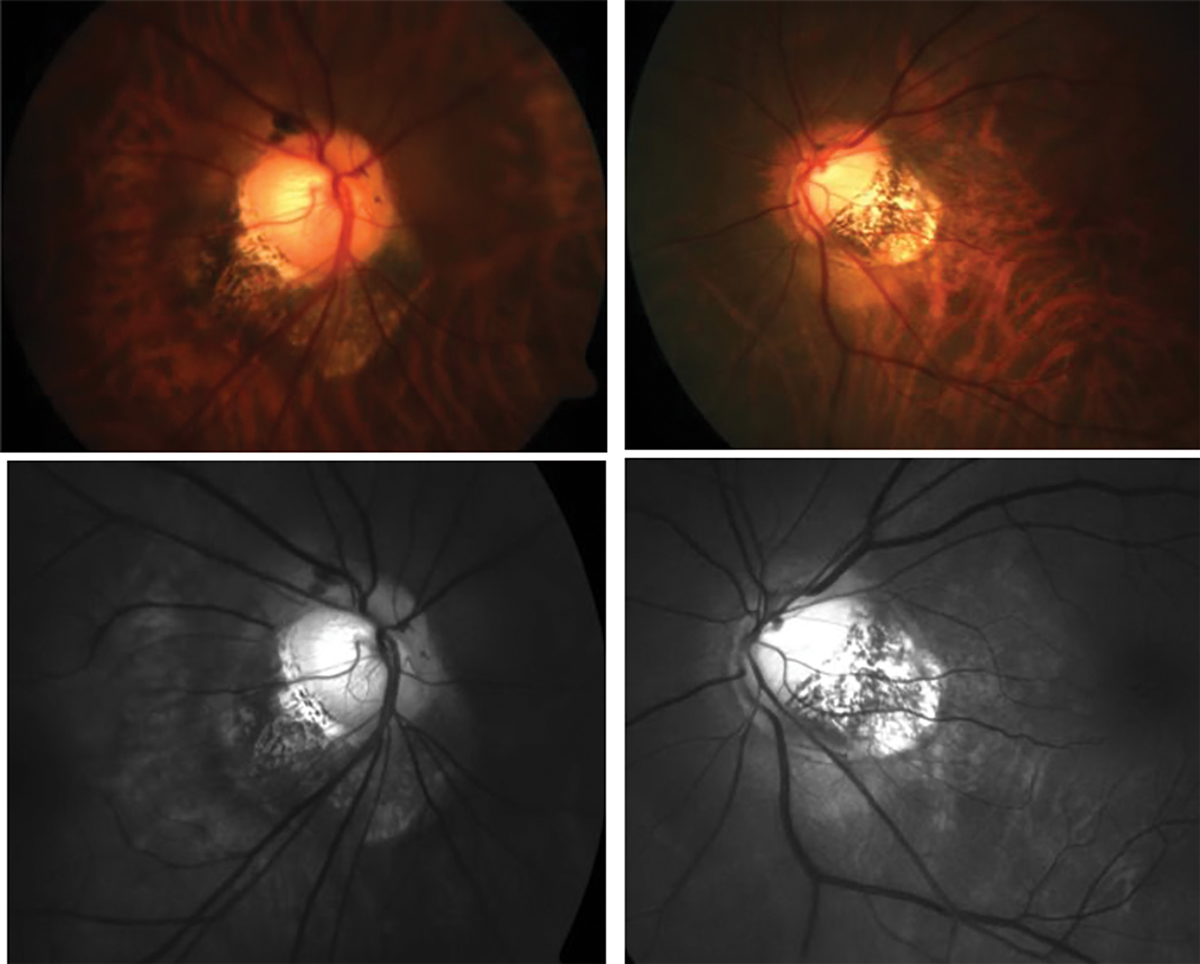 |
|
Having a tilted disc or high myopia may increase the likelihood of having peripapillary hyperreflective ovoid mass-like structures, study finds. Photo: Andrew Rouse, OD. Click image to enlarge. |
A new study looked at the prevalence of peripapillary hyperreflective ovoid mass-like structures (PHOMS) in young children without optic disc drusen or optic disc edema to better understand its association with other optic nerve head features and myopia. In the healthy study cohort, the prevalence of PHOMS was almost 9%, suggesting that this independent finding shouldn’t be taken as evidence of optic neuropathy.
The researchers analyzed data from 1,407 children aged 11 to 12, excluding those who had optic disc drusen or optic disc edema. OCT scans were performed on each child’s optic nerve head and then graded for PHOMS, disc tilt, prelaminar hyperreflective lines and scleral canal diameter, as well as investigated for associated prenatal and ocular parameters.
The prevalence of PHOMS was 8.9%, and the study authors found it to be associated with increasing myopic refraction and the presence of a tilted optic nerve head and prelaminar hyperreflective lines. PHOMS was predominantly located in the superonasal section of the optic disc. The researchers also noted in their paper that “myopia and optic nerve head tilt were more common in children with PHOMS” and that “prelaminar hyperreflective lines were found in 17.9% of children with PHOMS compared with 7.3% of children without PHOMS.”
Prelaminar hyperreflective lines were associated with a shorter axial length both in children with and without PHOMS, and they also showed an association with higher birth weight and continued maternal smoking during pregnancy. However, no prenatal factors appeared to be associated with PHOMS.
According to the researchers, these findings suggest that “PHOMS is common in children without optic disc drusen or optic disc edema.” They also noted that risk factors for having PHOMS include tilted discs and high myopia. “With the increasing incidence of myopia in children worldwide, PHOMS will likely be an increasingly common finding in clinical practice,” they concluded in their paper.
Behrens CM, Malmqvist L, Jørgensen M, et al. Peripapillary hyperreflective ovoid mass-like structures (PHOMS) in children: the Copenhagen Child Cohort 2000 Eye Study. Am J Ophthalmol. September 12, 2022. [Epub ahead of print]. |


